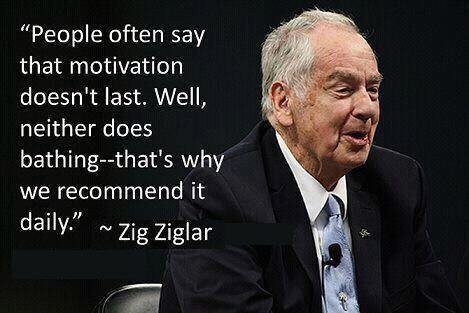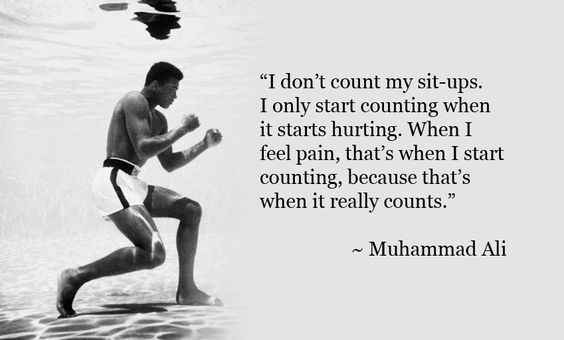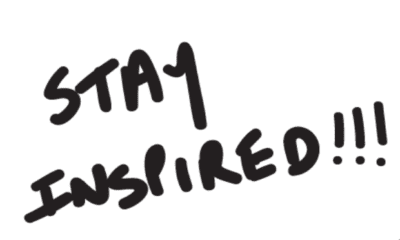Success Advice
Inspiration Is For Amateurs. It’s Time To Take Action.
Doing your best work isn’t easy. No way around it. Sometimes, coming up with a good idea feels a bit like pushing a giant boulder uphill. It just won’t move.
If we’re being real, creation can be downright painful sometimes. But nothing numbs the pain of doing your best work like a little shot of inspiration. Ahh, sweet nectar of motivation, let me sip thee!
I think the world is addicted to inspiration. Look on Instagram. Look on YouTube. The majority of the material on these platforms is palliative in nature. It makes us feel good about what we’re doing. Even if we’re not doing much.
Why? It feels good to get motivated — even if you don’t do anything or take any action on that feeling. Before you say anything about MY Instagram account — YES, I do post motivational quotes. I’m not saying this type of content is inherently bad. When used as a tool to get work done in short bursts, inspiration can be an extremely powerful resource. I just think that we often mistake the tool for the work.

Perhaps the best thing about inspiration is the deep feeling of focus and clarity you feel when you externalize your reasons for doing something and attribute your work to some source besides your own mind. That’s when you’ll catch yourself saying things like, “I watched this video on YouTube and it really inspired me….” Or, if you’re having trouble getting work done, you might say…“I don’t know what’s wrong with me. I’m just not feeling inspired today.”
Both of those statements make inspiration seem like it’s something outside of you. Something that creeps up on you, unexpectedly, somehow taking possession of you and finessing you into action. What’s worse, because you feel like inspiration just “happens,” you actually sit there and wait for it. Then, you even take it a step further: you depend on it to get anything done.
Maybe you’ve caught yourself saying, “Yeah, I could start this idea I’ve been thinking about…but I’m just not that inspired right now.” And surprise, surprise, nothing ever gets done.
Why? Because inspiration is fleeting. It’s a temporary feeling, not a permanent state.
What’s the problem?
You can’t wait for inspiration. If you do, it’s not going to come. If it does, it’ll be a welcome surprise. But it’s not going to help you. I mean, let’s think about this logically for a second: what’s the value in only doing your best work when you “feel” like it? That’s like saying, “I only want to go to the gym when I’m feeling good.” Well, DUH!
Of COURSE you want to go to the gym when you feel good. You feel good, so everything you think about seems like a good idea, but what about the days you don’t feel good? What about the days you don’t feel inspired or motivated? What happens then?
Undoubtedly, days of exhaustion, self-doubt and creative slump will outweigh the days where you feel like a modern day Michelangelo. Should you just retire to your quiet corner until a picture of a lion on Instagram spurs change and lights a fire inside you?
No. You can’t let your feelings dictate your behavior. Feelings are variable and ephemeral: they come and go.
Guess what? Your work only counts on the days where you DON’T want to do it. It only counts when you’d much rather be doing something else. The call to your craft is NON-NEGOTIABLE.
When asked how many “reps” he did of a certain exercise, Muhammad Ali famously said, “I don’t know. I only start counting once it starts burning.” The cold reality is that, sometimes, it’s a real struggle to get your best work into the world.

That’s why so many of us admire great creators, artists and thinkers but so few of us will ever become one. If you wait to be inspired to do your best work, you’ll be waiting a long time. Most likely forever. Inspiration is not coming to get you. But you can seek it out.
What’s the solution?
Do it on the sunny days and the rainy days. Stop giving yourself a “pass” to leave your gifts on the table, unopened. Stop allowing yourself the excuse not to create. The ironic part is, as you push through the uncomfortable stage (as all students on the road to mastery must) you’ll find that the struggle actually leads to more inspiration, despite the fact that there was none there to begin with.
“If people knew how hard I worked to get my mastery, it wouldn’t seem so wonderful at all.” – Michelangelo
It’s a feedback system. You don’t get inspired, then do great work. You do great work, then get inspired.
When are you going to start taking action? Please leave your thoughts in the comment section below!
Life
10 Research-Backed Steps to Create Real Change This New Year
This New Year could finally be the one where you break old patterns and create real, lasting change.

Every New Year, we make plans and set goals, but often repeat old patterns. (more…)
Change Your Mindset
The Silent Skill That Makes People Respect You Instantly
What truly earns respect and why most people go about it the wrong way

Everybody craves respect but not everyone earns it. Some people believe that a title, years of experience, or a position of authority automatically entitles them to respect. (more…)
Entrepreneurs
The Essential Skills Every Entrepreneur Needs In 2026
Success in the digital age isn’t about luck. It’s about mastering the skills that separate dreamers from doers.

When I was 22 years old, I started my first side hustle as a ghostwriter. (more…)
Did You Know
The Success Patterns You Inherited (And Didn’t Notice)
Your family history may hold the key to why you think, act, and feel the way you do today.

Who are you? Your experiences and your family’s narratives and legacies contribute to your identity. Your ancestry contains individual traits and forces that have been inherited over the years. It also carries the fights and victories of your forebears and older family members. (more…)
-

 Personal Development4 weeks ago
Personal Development4 weeks agoThis Silent Habit Might Be Sabotaging Your Career
-

 Business3 weeks ago
Business3 weeks agoWhy Your E-Commerce Fulfilment Is Probably Broken (And How to Fix It)
-

 Shift Your Mindset3 weeks ago
Shift Your Mindset3 weeks ago11 E’s That Define Every Great Leader And Why Most People Miss Them
-

 Did You Know2 weeks ago
Did You Know2 weeks agoThe Success Patterns You Inherited (And Didn’t Notice)
-

 Business3 weeks ago
Business3 weeks agoThe Hidden Money Pit in Your Operations (and How to Use It)
-

 Entrepreneurs2 weeks ago
Entrepreneurs2 weeks agoThe Essential Skills Every Entrepreneur Needs In 2026
-

 Change Your Mindset1 week ago
Change Your Mindset1 week agoHow to Turn Your Mind Into Your Greatest Asset (Instead of Your Enemy)
-

 Change Your Mindset6 days ago
Change Your Mindset6 days agoThe Silent Skill That Makes People Respect You Instantly

























4 Comments